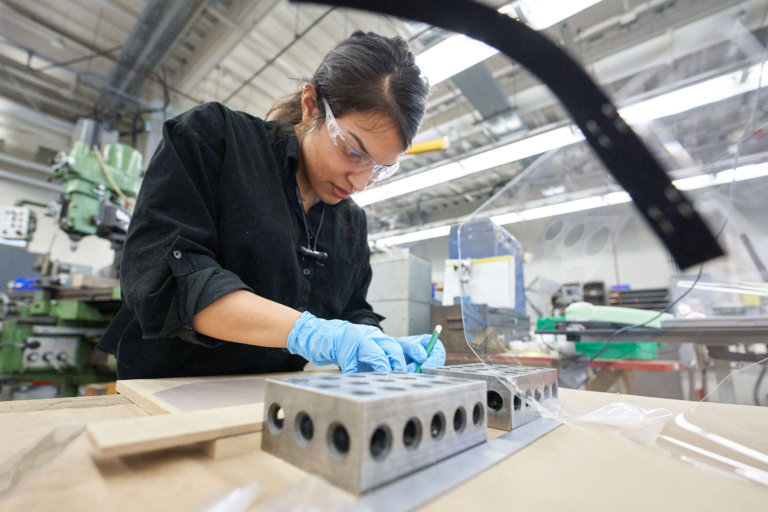
Are you planning on working in the Great White North after graduating from a university there? If so, you might be in luck.
A recent study shows that Canadian wages among immigrants have risen in the last few years. Statistics Canada (StatsCan) reports that the median pay for immigrants who became permanent residents earned a total of 31,900 Canadian Dollars in 2019, which is the highest amount recorded among all groups of immigrants since 1981.
What’s even more revealing — and advantageous — for international students with work experience, is the fact that out of all immigrant worker categories, those who possess both work and study experience before admission into Canada had the highest median wage a year after entry. Those who arrived in Canada in 2018 achieved a median wage of CA$44,600, an amount higher than the median wage of CA$38,800 among the Canadian-born population for that year.
However, the lowest-earning cohort among immigrant populations are those who only have study permits before landing, earning only CA$15,100 in 2019. StatsCan cites that age could factor into the earnings, as this group is younger than their counterparts. Most are also likely employed in part-time jobs, hence the lower median wage. At the same time, younger immigrants have the potential to earn more down the road as they gain more experience in the Canadian labour market.
Immigrant wages in Canada are on the rise: study https://t.co/DnAxdF1QHp
— Canadian Immigration (@canadavisa_com) December 24, 2021
Rising Canadian wages among immigrants: the breakdown
The report categorised earners into three distinct groups: immigrants with work and study experience, just work, and just study experience.
Having work-related experience proved to be a good cushion for newcomers within their first year of arrival. Canadian immigrants who only possessed work experience before arrival in 2018 achieved a median wage of CA$39,300, an amount that is also higher than what Canadian-born workers earned. This supports StatsCan’s overall findings: the median Canadian wages for economic principal applicants were more than the Canadian population one year after arrival.
How to immigrate to Canada in 2022 https://t.co/igIemOewMx
— Canadian Immigration (@canadavisa_com) January 1, 2022
“Economic principal applicants are selected on the basis of their education, specific skills and work experience,” the report reads. “The vast majority (96.1%) of immigrant taxfilers admitted under this category in 2018 had completed some post-secondary education at the same time of their admission,” it adds.
Gender also plays a role in earning outcomes for economic-class principal applicants. The starting median wage for women is lower than men’s, whose wages quickly increased as they’re absorbed into the workforce. This resulted in a widening of the gender pay gap over time that benefits men, but the report states that further analysis is needed to study the reasons behind this pattern.
What this means for international students

International students in Canada face many barriers to transition into the local workforce that diminish their chances for securing employment after graduation. Source: Yoshikazu Tsuno / AFP
The current trend points towards a promising career trajectory for international students in Canada, or graduates who plan on moving to the country based on any one of its immigration programmes. From the report, it’s clear that immigrants with post-secondary education, work experience, and excellent language proficiency are preferred due to their higher ability to integrate into the Canadian workforce.
After dipping more than half in immigration numbers due to the pandemic, Canada has resumed its ambitious pro-immigration policy by welcoming more newcomers in 2021. About 354,000 study permits were issued to international students in the first nine month of 2021, showing an increase of 63% from the same time period in the previous year, Bloomberg reports.
“Targeting a pool of talent that exists globally to fill gaps in the Canadian labor force has to be part of the strategy,” Sean Fraser, the Minister of Immigration, Refugees and Citizenship of Canada, was quoted saying in an interview.
More jobs are up for grabs in Canada 🇨🇦 Will it bode well for international students? 🤔#workinCanada #internationalstudentsCanada #CanadaJobshttps://t.co/6p6qddInzH
— Study International (@Study_INTNL) January 3, 2022
For many international students in Canada, obtaining a post-graduation work permit (PGWP) is the end goal of their study abroad experience, which opens up the route to permanent residence. Although the StatsCan report is welcome news, barriers still exist for foreign students in Canada to obtain meaningful work experience that would ease their path into securing employment after graduation.
According to a 2019 study comparing retention of international graduates in three countries, the largest obstacles to foreign students’ transition into the employment market in their host countries are insufficient professional networks, poor language skills, and lack of exposure to the local workforce. Despite welcoming post-study work policies, international students are not given enough training and coordinated support to help them land jobs post-graduation. As a result, many end up leaving their host countries earlier than intended.










